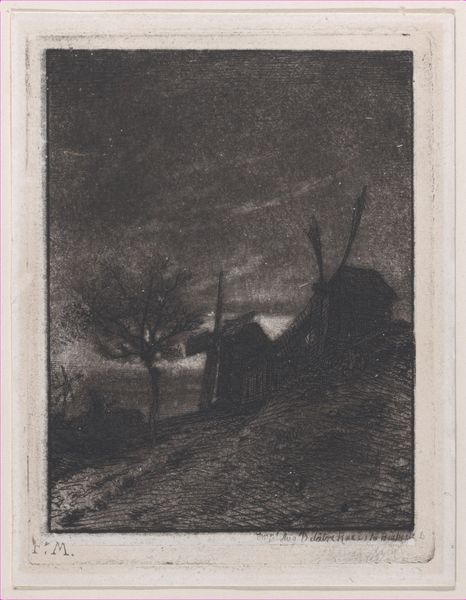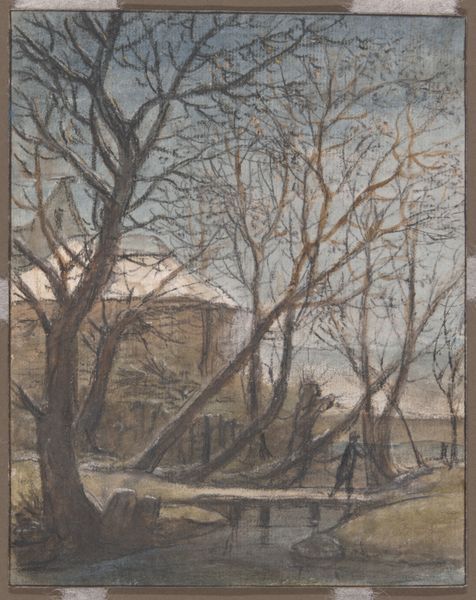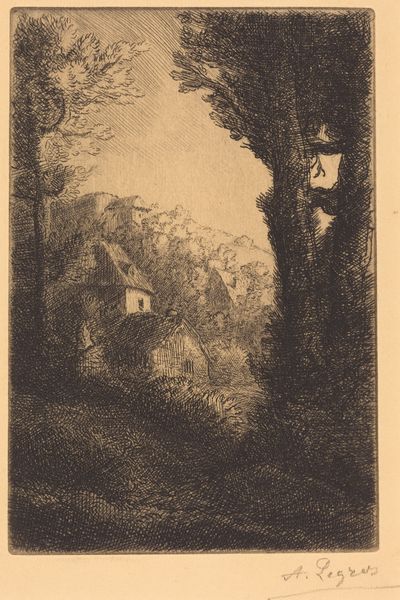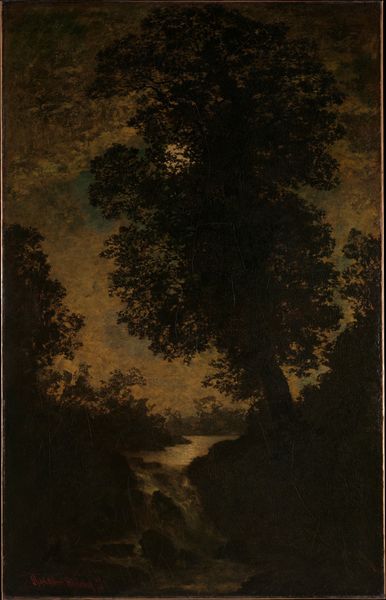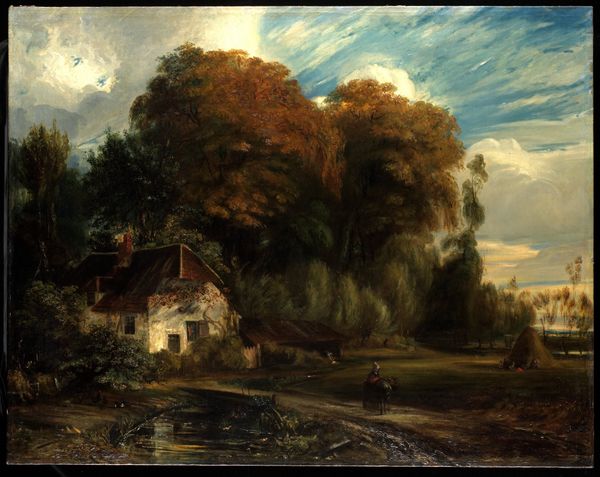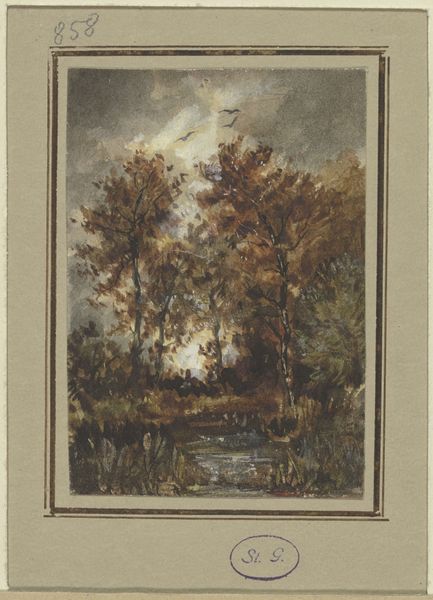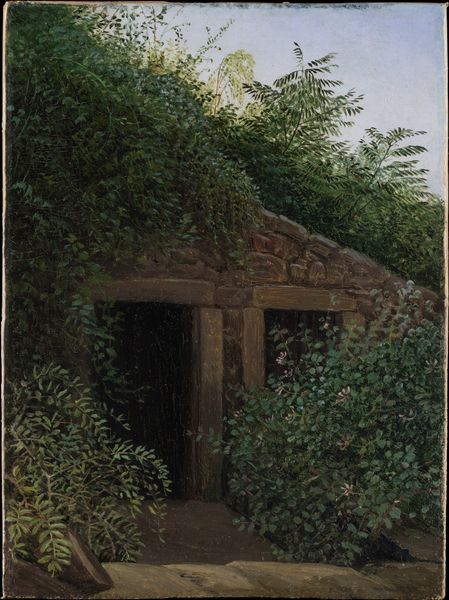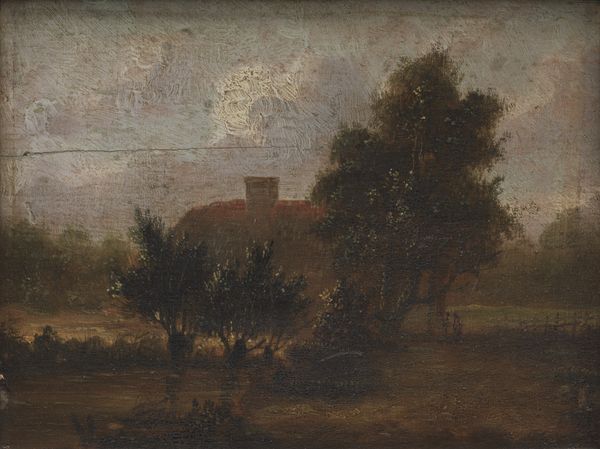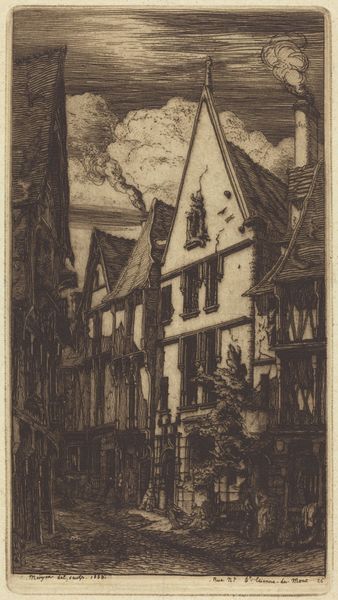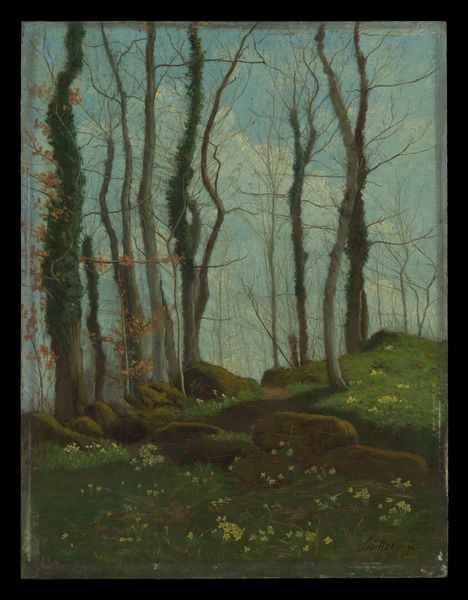
plein-air, oil-paint
#
plein-air
#
oil-paint
#
landscape
#
romanticism
Dimensions: 11 1/4 × 8 1/2 in. (28.5 × 21.5 cm)
Copyright: Public Domain
Editor: So this is Schloss Milkel in Moonlight, painted by Carl Gustav Carus between 1833 and 1835, using oil paints, and done en plein-air. It's got a definite feeling of mystery. The castle glows softly against the stark contrast with the moonlit night. How do you interpret this work? Curator: The glow of the one lit window juxtaposed with the moon certainly contributes to this mysteriousness. Consider, too, that light in art has often symbolized consciousness, awareness, and spiritual illumination. One might ask: what psychological space does this represent? The contrast might explore inner anxieties and the yearning for understanding the darker, unconscious aspects of ourselves. The castle then stands as a symbol, a repository for memories. Editor: That's interesting! It also feels very deliberately composed, almost staged. The dark, leafy foreground seems to frame the main scene. Curator: Indeed! The composition, combined with moonlight, heightens the sense of drama, doesn’t it? The symbolism becomes potent, doesn't it, given that moonlight, across cultures, represents the subtle influence, intuition, dreams, and perhaps even the slightly irrational side of ourselves. Editor: So, the overall tone suggests more than just a pretty night scene. Curator: Exactly! The artist’s choice to paint the Schloss Milkel bathed in moonlight connects to a Romantic ideal – an engagement with human emotions and how cultural memory and shared experiences are embedded within visual symbols. How these can define a nation’s self-awareness. Editor: I see. It's fascinating how layers of cultural meaning can be embedded within a seemingly simple landscape. I definitely learned new ways to read symbols in art. Curator: And I learned to value your initial response in how it is open to possibilities that enrich my perception.
Comments
No comments
Be the first to comment and join the conversation on the ultimate creative platform.

